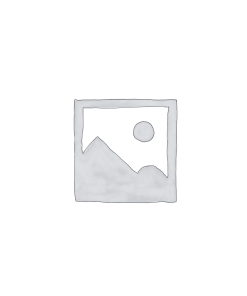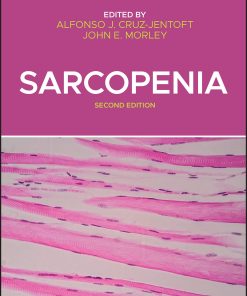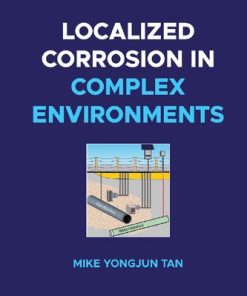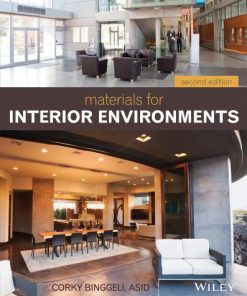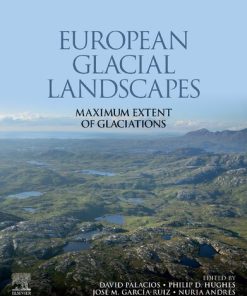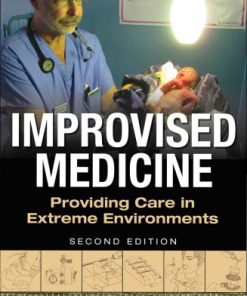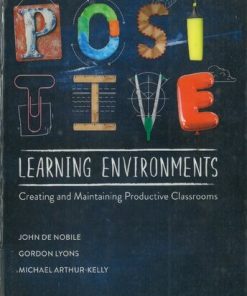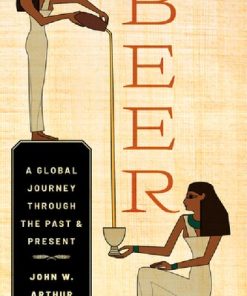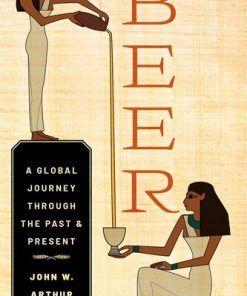(Ebook PDF) Past Glacial Environments 2nd Edition by John Menzies 0081005253 9780081005255 full chapters
$50.00 Original price was: $50.00.$25.00Current price is: $25.00.
Past Glacial Environments 2nd Edition by John Menzies – Ebook PDF Instant Download/DeliveryISBN: 0081005253, 9780081005255
Full download Past Glacial Environments 2nd Edition after payment.
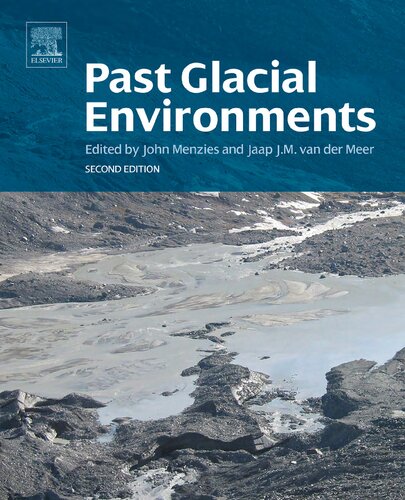
Product details:
ISBN-10 : 0081005253
ISBN-13 : 9780081005255
Author : John Menzies
Past Glacial Environments, Second Edition, presents a revised and updated version of the very successful first edition of Menzies’ book, covering a breadth of topics with a focus on the recognition and analysis of former glacial environments, including the pre-Quaternary glaciations.
The book is made up of chapters written by various geological experts from across the world, with the editor’s expertise and experience bringing the chapters together. This new and updated volume includes at least 45% new material, along with five new chapters that include a section on techniques and methods.
Past Glacial Environments 2nd Table of contents:
Chapter 1. Introduction
1.1 Impact of Past Glacial Environments on Planet Earth
1.2 Glacial Sediments and Glacial Geomorphology/Geology
1.3 Challenges and Opportunities
References
Part I: The Prequaternary
Chapter 2. Precambrian Glacial Deposits: Their Origin, Tectonic Setting, and Key Role in Earth Evolution
Abstract
2.1 Introduction
2.2 Age Distribution of Ancient Glacial Deposits
2.3 Why Did Glaciations Occur?
2.4 The Palaeolatitude Problem
2.5 Archaean Glaciations
2.6 Palaeoproterozoic Glaciations
2.7 The Barren Billion
2.8 The Great Cryogenian Glaciations
2.9 Ediacaran Ice Ages
2.10 Tectonic Setting and Palaeolatitudes: Radical Changes in the Ediacaran Period
2.11 Conclusions
Acknowledgments
References
Chapter 3. The Early Palaeozoic Glacial Deposits of Gondwana: Overview, Chronology, and Controversies
Abstract
3.1 Introduction
3.2 Extent of Glaciation and Chronology
3.3 The Sedimentary Record
3.4 Conclusions
References
Part II: The Quaternary
Chapter 4. Quaternary Glaciations and Chronology
Abstract
4.1 Introduction
4.2 Prelude to the Quaternary
4.3 Glaciation During the Quaternary
4.4 Plio-Pleistocene Glaciation
4.5 The ‘Glacial’ Pleistocene
4.6 Last Glaciation
4.7 Summary
References
Part III: Glacial Processes
Chapter 5. Subglacial Processes and Sediments
Abstract
5.1 Introduction
5.2 Erosion in the Subglacial
5.3 Transport: Mechanics
5.4 Deposition: Mechanics
5.5 Subglacial Sediments
5.6 Subglacial Landforms/Bedforms Directly Attributable to Active/Passive Ice Activity
5.7 Subglacial Landforms/Bedforms Indirectly Attributable to Active/Passive Ice Activity
5.8 Repetitive Sedimentologic Histories in Subglacial Environments
5.9 Future Perspectives: Challenges and Opportunities
References
Chapter 6. Supraglacial Environments
Abstract
6.1 Introduction
6.2 Sources and Characteristics of Supraglacial Debris
6.3 Processes in the Supraglacial Environment
6.4 Supraglacial Sediments and Landforms in the Pleistocene Record
6.5 Summary and Conclusions
References
Chapter 7. Modern Glaciomarine Environments and Sediments: An Antarctic Perspective
Abstract
7.1 Introduction
7.2 Physical Geography of Glacial and Glaciomarine Systems
7.3 Relationship of Glaciomarine Processes to Base Level
7.4 Stratigraphic Considerations
7.5 Antarctic Glaciomarine, Systems, Processes and Facies
7.6 Deposystems and Facies Ensembles
7.7 Provenance Changes
7.8 Other Processes Influencing Sediment Deposits
7.9 Biotic Interactions in Glaciomarine Settings Including Ice Shelves
7.10 Sediment Accumulation Rates
7.11 Stratigraphic Successions, Single Cycle
7.12 Cyclo-Stratigraphy and Examples of Facies Succession
7.13 Glacial Isostacy, Rebound, and Local Base Level
7.14 Glaciomarine Systems Over Deep Geologic Time
Acknowledgments
References
Further Reading
Chapter 8. Glacioaeolian Processes, Sediments, and Landforms
Abstract
8.1 Introduction
8.2 Sediment Production and Sources
8.3 Wind Action Around Glaciers
8.4 Glacioaeolian Sediments and Landforms
8.5 Facies
8.6 Conclusion
References
Chapter 9. Glaciolacustrine Processes
Abstract
9.1 Introduction
9.2 Physical Limnology and Sedimentology
9.3 Ice-Contact Lakes
9.4 Sedimentary Facies in Ice-Contact Lakes
9.5 Glaciotectonic Deformation
9.6 Subglacial Lakes
9.7 Ice-Distal Lakes
9.8 Distal Lakes as Environmental Repositories
9.9 Conclusion
References
Chapter 10. Glaciovolcanism: A 21st Century Proxy for Palaeo-Ice
Abstract
10.1 Introduction: What is Glaciovolcanism and Why is it Important?
10.2 Advantages and Disadvantages of Volcanic Versus Sedimentary Rocks as Palaeoenvironmental Tools
10.3 Relationship Between Volcanism and Climate
10.4 A Typical Basaltic Glaciovolcanic Eruption
10.5 Physical Properties of Ice Important for Glaciovolcanic Eruptions
10.6 Classification of Glaciovolcanic Sequences and Landforms
10.7 Glaciovolcanic Sequences as Palaeoenvironmental Proxies
10.8 Case Studies Using Glaciovolcanism to Reconstruct Past Ice Conditions
10.9 Summary
Acknowledgements
References
Chapter 11. Glacial Lithofacies and Stratigraphy
Abstract
11.1 Introduction
11.2 Geological Complexities in Glacial Sequences
11.3 Glacial Lithofacies
11.4 Stratigraphy in Glaciated Environments
11.5 Stratigraphic Approaches Within Glaciated Environments
11.6 Summary
11.7 Conclusions
References
Chapter 12. Glaciohydrogeology
Abstract
12.1 Introduction
12.2 Elementary Principles of Hydrogeology
12.3 Meltwater Production and Drainage Systems to the Bed
12.4 Groundwater Flow Characteristics Under Ice Sheets
12.5 Effect of Groundwater Drainage on Glacier Dynamics
12.6 Landforms Resulting from Inefficient Groundwater Drainage
12.7 Impacts of Subsurface Increasing Meltwater Pressure
12.8 Hydrogeochemistry
12.9 Issues and Applications
References
Chapter 13. Glacitectonics
Abstract
13.1 Introduction
13.2 Glacitectonic Research: A Brief History
13.3 Subglacial Deformation: The Subglacial Shear Zone
13.4 Subglacial Deformation of Permafrost
13.5 Ice-Marginal and Proglacial Deformation
13.6 Glacitectonic Rafting
References
Chapter 14. Geographic Information Systems and Glacial Environments
Abstract
14.1 Introduction
14.2 GIS Data Structures and Remotely Sensed Data Products
14.3 Glacial Landform Mapping
14.4 Glacial Geological Inversion of Palaeo-Ice Sheet Beds and GIS-Based Ice Sheet Reconstructions
14.5 Future Applications of RS and GIS in Palaeoglaciology
References
Chapter 15. Periglacial Processes in Glacial Environments
Abstract
15.1 Introduction
15.2 Cold Nonglacial Environments
15.3 Frost Action
15.4 Permafrost
15.5 Pleistocene Permafrost
15.6 Ground Ice
15.7 Thermokarst
15.8 Hydrology in Periglacial Environments
15.9 The Changing Periglacial Realm
References
Chapter 16. Ice Sheets and Climate: The Marine Geological Record
Abstract
16.1 Past Glaciations
16.2 Ice Sheets in the Earth System
16.3 Reconstructions of Ice Extent and Ice Thickness
16.4 Orbital Forcing of Glaciation and Climate Feedbacks
16.5 Abrupt Climate Change and Rates of Sea Level Rise
References
Part IV: Techniques and Methods
Chapter 17. Soils and Palaeosols in Glacial Environments
Abstract
17.1 Introduction
17.2 Surface Soils in Glaciated Landscapes
17.3 Palaeosols in Glacial Settings
17.4 Conclusions
References
Chapter 18. Ice Sheet and Glacier Modelling
Abstract
18.1 Overview: Historical Perspective
18.2 Mechanics and Rheology
18.3 Ice Flux Inputs and Outputs: Mass Budgets and Mechanical Controls
18.4 Temperature Effects
18.5 Basal Hydrology and Fast Flow
18.6 Future Directions
Acknowledgments
References
Appendix A: Mathematical Details: Coordinate System, Vectors and Tensors
Appendix B: Mathematical Details: Mechanical Balances and Boundary Conditions for Upper and Lower Surfaces
Chapter 19. Geochronology Applied to Glacial Environments
Abstract
19.1 Introduction
19.2 Radioactive Nuclides
19.3 Radiative Dosimetry Methods
19.4 Amino Acid Racemization
19.5 Comparative Methods
19.6 Summary
References
Chapter 20. Application of Till Mineralogy and Geochemistry to Mineral Exploration
Abstract
20.1 Introduction
20.2 Historical Perspective
20.3 Ice-Flow Reconstruction for Mineral Exploration
20.4 Glacial Dispersal Trains
20.5 Mineral Residence Sites in Till
20.6 Exploration Methods
20.7 Conclusions
Acknowledgements
References
Appendix A Mineral Deposits Discovered by Till Sampling and Boulder Tracing
Chapter 21. Micromorphology and Microsedimentology of Glacial Sediments
Abstract
21.1 Introduction
21.2 Sampling and Preparation Techniques
21.3 Study of Thin Sections
21.4 Microstructure Nomenclature
21.5 Micromorphology and Microsedimentology of Glacial Sediments
21.6 Future Perspectives
Acknowledgements
References
Further Reading
Part V: Problems and Perspective
Chapter 22. Glacial Environments: Themes and Issues
Abstract
22.1 Introduction
22.2 Themes in Past Glacial Environments
22.3 Theme 1: Global Warming and Past Glacial Environments
22.4 Theme 2: Glaciated Lands, Margins, Deep-Time Archives and Ocean Basins
22.5 Theme 3: ‘Old’ and Extant Persistent Problems in PGE
22.6 Epilogue
People also search for Past Glacial Environments 2nd
past glaciations
past glaciers
past environments
past environments of the grand canyon
past glacial environments pdf
Tags:
Past Glacial,Environments,John Menzies,Menzies book
You may also like…
History - Archaeology
Engineering - Chemical Engineering
Earth Sciences - Geography
European Glacial Landscapes : Maximum Extent of Glaciations 1st Edition David Palacios
Uncategorized
History
Beer: A Global Journey Through The Past And Present 1st Edition John 0197579825 9780197579824




